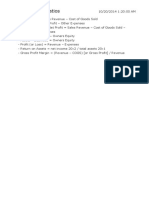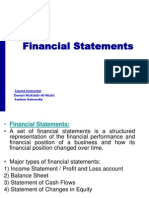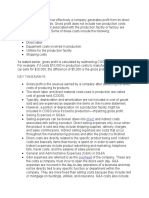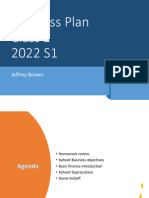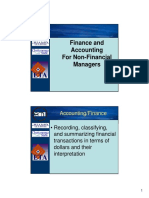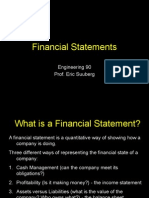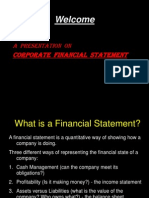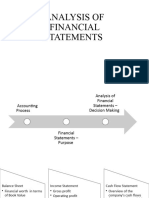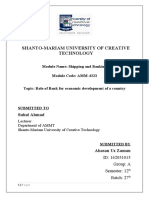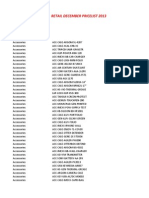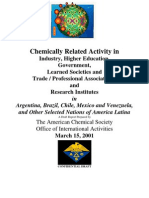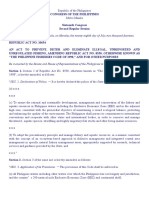0% found this document useful (0 votes)
19 views31 pages1 Income Statement ROS-5
The document provides a comprehensive analysis of financial statements, focusing on the Income Statement and its components such as operating revenues, variable charges, EBITDA, and net income. It explains key concepts like Gross Profit Margin, Contribution Margin, and various leverage degrees, which measure the sensitivity of profits to changes in sales. Additionally, it covers break-even analysis, cash flow from operations, and the impact of depreciation and interest expenses on profitability.
Uploaded by
barbosaCopyright
© © All Rights Reserved
We take content rights seriously. If you suspect this is your content, claim it here.
Available Formats
Download as PDF, TXT or read online on Scribd
0% found this document useful (0 votes)
19 views31 pages1 Income Statement ROS-5
The document provides a comprehensive analysis of financial statements, focusing on the Income Statement and its components such as operating revenues, variable charges, EBITDA, and net income. It explains key concepts like Gross Profit Margin, Contribution Margin, and various leverage degrees, which measure the sensitivity of profits to changes in sales. Additionally, it covers break-even analysis, cash flow from operations, and the impact of depreciation and interest expenses on profitability.
Uploaded by
barbosaCopyright
© © All Rights Reserved
We take content rights seriously. If you suspect this is your content, claim it here.
Available Formats
Download as PDF, TXT or read online on Scribd
/ 31






